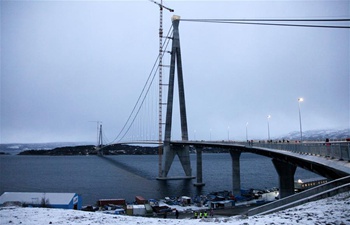SYDNEY, Dec. 11 (Xinhua) -- Statistical physics could help transport authorities predict and avoid traffic gridlock thanks to a new research by scientists at the University of New South Wales (UNSW) and their colleagues of the University of California Berkeley.
In a paper released on Tuesday, data from six major cities were analyzed to determine how long it took drivers to reach their destinations during peak periods, labelled "recovery time," and at what point traffic started to move beyond congestion to network collapse, or gridlock.
"We have found that this simple recovery time' measure is directly related to demand and supply, no surprise," UNSW's Dr. Meead Saberi said.
"What is surprising is that all the six cities that we have studied perform similarly."
Analysis showed that despite various differences between the cities around the world, the transition to gridlock occurs in a similar fashion.
"The demand over supply ratio that we have measured is the ratio of the vehicle kilometers travelled in a city to the total vehicle distance the road network can support per hour," Saberi said.
"When this ratio exceeds a critical value, we see transition to gridlock, for example, a major global city like London may have a smaller critical value and that's why it sees gridlock more often than, say, a smaller city like Adelaide."
Transport authorities can use the team's findings to understand how and why traffic gridlock occurs, and intervene in networks to avoid them extending beyond their maximum capacities.













